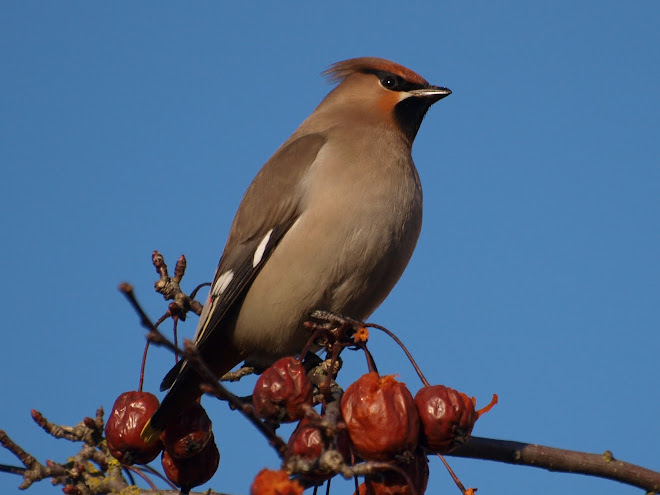I've made a return visit (on my own this time!!) to St John the Baptist in Middleton, North Warwickshire.
There has probably been a church on the site since Anglo Saxon times although no evidence of an earlier church remains. The present church was built in the Norman style probably at the end of the 12th century. The walls of the chancel and parts of the lower south wall of the nave date back to Norman times.
At the end of the 13th century the North Aisle was added and the tower was built in the 15th century.
According to the guide book the grooves in the sandstone were made when implements were sharpened. Presumably this includes arrows and these marks are far more obvious than the ones I photographed recently at St Giles, Packwood.
The church porch was built in the 18th century but above the church door can be seen Norman dog-tooth stonework over the original 800 year old church entrance.
It appears swallows like nesting in the porch :)
The font is believed to be late 19th century and the wooden carved top is made of oak.
Amusing message for the bell ringers :)
The chancel screen seen in this photo is made of oak and is 15th century - more of this later! The pulpit is believed to be late 17th century.
The Nave windows were restored and fitted with stained glass in the 1890's and may be by Kempe
I think the Canon bridge camera I used last time may take better photos of stained glass than my Olympus. It was certainly better for zooming in on detail.
The 15th century oak chancel screen was the highlight of the visit with so many beautiful carvings.
This was my favourite a Green Man or Man in the Oak Tree?
The 17th century Ridgeway Memorial - in memory of Lord Edward Ridgeway.
19th century East Window celebrating the resurrection.
The Fitzherbert Recess is the oldest monument in the church and the small brass plant has an inscription in Latin to Dorothy Fitzherbert (nee Willoughby) who died in 1507.
The 17th century Willoughby Monument is very important architecturally and is 17 feet high. It was erected in memory of Francis Willoughby (a naturalist who died in 1665) and his wife Cassandra (died 1675). This and other Willoughby gravestones show the link with nearby Middleton Hall.
When Victorian plasterwork was removed from the Nave in 1994 the remains of 14th century wall paintings were revealed.
The White Memorial in memory of Samuel and Benjamin White whose charity constructed 6 almshouses in the village.
An attractive bench outside the churchyard - the wall which surrounds the church is 17th century and made of sandstone. It was repaired extensively in the 19th century.
The churchyard contains the base of a 13th century churchyard cross which I had trouble finding. Decided in the end that it may be the stone from which a shrub appears to be growing!
I will return to St Cuthberts mentioned in my last post when I have found out some more about the Saxon (or not) mound.
Current reading material.
I've recently started re-reading the Lark Rise to Candleford trilogy by Flora Thompson. How I wish the series was still on tv. I do have a lovely illustrated version but sadly its abridged so
I've resorted to a paperback.
I wanted to re-read the books before starting on Richard Mabey's book on Flora and
I'm also hoping later in the year to persuade B or D to visit the villages and towns in North Oxfordshire where she lived and where the books are based.
I've just finished this book on The Green Man hence my knowledge of The Man in the Oak mentioned above!
Whilst waiting for some of my favourite authors to bring out some new books I've been continuing the re-reading of the Starbridge novels by Susan Howatch
together with some of my favourites by Daphne du Maurier.
Unless I can find some new authors pretty quickly I shall start on my Mary Wesley collection!
Reference: "A Brief Guide to St John the Baptist, Middleton, Warwickshire"



















































































